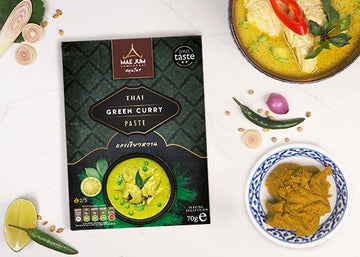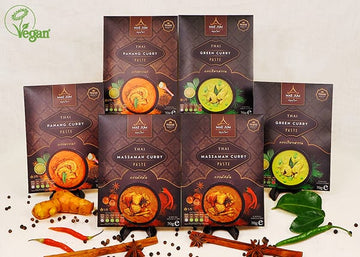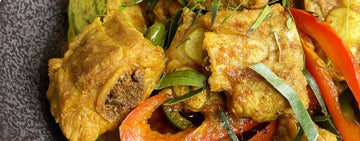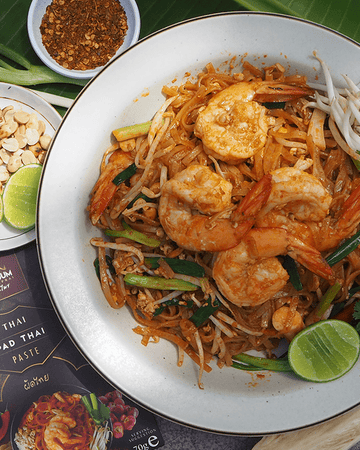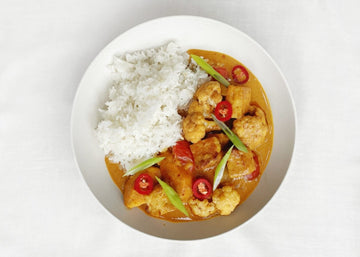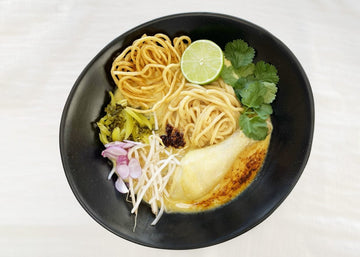Thai cuisine is renowned for its vibrant flavours, aromatic herbs, and of course, its fiery heat. If you’re a lover of spicy dishes, you’ll appreciate the intense warmth that radiates from a well-prepared Pork Rib Thai Jungle Curry. This traditional dish hails from the northern regions of Thailand, where the jungles influence both the ingredients and the cooking techniques. Unlike some of the more widely known Thai curries, such as the coconut-rich green or red curries, jungle curry (or "Gaeng Pa") is unique for its lack of coconut milk, resulting in a lighter, yet incredibly bold, broth that packs a punch.
The Essence of Jungle Curry
Jungle curry originated in Thailand’s rural, forested areas, where ingredients like coconut were scarce. What distinguishes it from other Thai curries is the absence of coconut milk, which gives it a distinctive heat-forward profile. This lack of creamy sweetness allows the aromatic herbs, spices, and chilli heat to take centre stage. While coconut milk softens the impact of spices in traditional Thai curries, jungle curry is unapologetically intense, perfect for those who love fiery, hearty dishes.
The name "jungle" suggests the earthy, robust ingredients that go into the curry, many of which are sourced directly from the forests. Traditionally, it features wild meats like boar or game, alongside an array of local vegetables. These days, pork ribs, chicken, and even fish have become common substitutions, bringing the dish into more modern kitchens while preserving its authentic taste.
Cooking Pork Rib Thai Jungle Curry
Despite its intense flavour profile, cooking a Pork Rib Thai Jungle Curry is relatively straightforward, albeit a little time-consuming due to the slow simmering of the ribs. The process is built around simple, fresh ingredients that come together to create a dish bursting with flavour. However, patience is key to ensure that the ribs become tender and absorb the spicy curry paste. If you're short on time, you can opt for quicker-cooking cuts of pork, though ribs truly bring out the best in this dish.
Before you start, ensure that you have all the essential ingredients, especially the Thai Jungle Curry Paste, which is the heart of the dish. Mae Jum’s Jungle Curry Paste is a great option, blending together traditional Thai spices like galangal, lemongrass, kaffir lime leaves, and bird’s eye chillies, making the preparation process much easier for home cooks.

Preparing the Pork Ribs
The preparation of the pork ribs is the first step. If you’ve purchased whole pork ribs, you’ll need to chop them into smaller, manageable chunks. It’s important to use a sharp, sturdy knife for this task to ensure clean cuts through the bone. A well-chopped rib is about two to three inches in length, which allows for easier cooking and serving. If your ribs are pre-cut, you can skip this step and move directly to boiling.
Once your ribs are ready, place them into a large pot of boiling water. Boiling the ribs for around 15 minutes helps tenderise the meat while removing impurities. Skim off any foam that rises to the surface, which consists of excess fat and other elements that may affect the clarity and taste of the final dish.
Crafting the Curry Base
While the ribs are boiling, it’s time to start on the curry base. Heat a little oil in a wok or large saucepan and stir-fry the Thai Jungle Curry Paste. This process releases the oils and intensifies the flavours of the herbs and spices, which is the backbone of the curry. Stir-fry the paste for around two minutes to ensure that it melds perfectly with the oil.
Next, add a small amount of water to the pan, around 100ml, which helps to break down the paste further. Season the curry with a dash of fish sauce and palm sugar—these two ingredients play a crucial role in balancing the flavours of the dish. The fish sauce adds depth and saltiness, while palm sugar brings a gentle sweetness that contrasts with the heat of the chillies.
Combining the Pork and Curry
Now that the ribs have boiled and the curry paste has been prepared, it’s time to combine them. Transfer the ribs to the curry paste, making sure to stir them well so they are fully coated. Pour in the remaining water, stir the mixture, and bring the temperature to a gentle boil. From here, cover the pot and allow the curry to simmer for about 30 minutes.
During this time, the ribs will absorb the flavours of the curry paste, while slowly becoming tender. As the curry simmers, it’s essential to occasionally stir the pot to ensure everything cooks evenly. The absence of coconut milk means that the flavours of the meat and spices become concentrated, resulting in a dish that is both spicy and savoury.

Adding Fresh Herbs and Final Touches
For a truly authentic touch, fresh herbs such as kaffir lime leaves and mint are added towards the end of the cooking process. Kaffir lime leaves contribute a zesty, citrusy aroma, which lightens the richness of the curry. To add these, tear the leaves roughly, leaving out the tough central stem. This simple step releases their essential oils into the curry. Mint leaves, on the other hand, provide a refreshing contrast to the heat of the dish, helping to cleanse the palate after each bite. You can also throw in some freshly chopped red chillies for extra heat if you like your curry particularly spicy.
The final step is to serve the curry hot, accompanied by a side of steamed Jasmine rice. The fragrant rice serves as the perfect base for soaking up the intense flavours of the jungle curry, while offering a momentary respite from the heat.
Why Jungle Curry Stands Out
What makes Thai Jungle Curry so distinctive is not only its spiciness but also its history and connection to the northern regions of Thailand. Unlike the more familiar Thai curries that rely on coconut milk to add richness and tame the heat, jungle curry remains bold and unadulterated. Its origins in the forested areas mean it was crafted with whatever was locally available—wild meats, fresh herbs, and plenty of chillies.
Another key feature of jungle curry is its adaptability. While pork ribs are a favourite, you can substitute chicken, fish, or even tofu for a vegetarian version. In Thailand, it’s not uncommon to see a variety of vegetables such as bamboo shoots, pea aubergines, or even wild mushrooms added to the dish. This versatility makes jungle curry a favourite among those who appreciate rustic, hearty meals.
A Final Thought
If you’re someone who loves heat and bold flavours, Pork Rib Thai Jungle Curry is a dish that should be on your list. Its robust, fiery profile is softened only slightly by the aromatic herbs, allowing you to experience the full range of flavours that Thai cuisine has to offer. The dish is a celebration of simplicity and tradition, bringing together the best of rural Thai cooking in a way that will transport your senses to the heart of the jungle.
Whether you're new to Thai cuisine or a seasoned enthusiast, jungle curry offers a deeper understanding of the diversity and richness of Thailand's food culture. Despite its heat, it’s a dish that invites you back for more, offering a rewarding, delicious experience with each bite.
Let me know in the comments how you got along with this pork rib Thai Jungle curry recipe and if you have any pictures or videos - make sure to tag @maejumsamunprai on social media, we would love to share! If you liked this recipe go ahead and check out our other ones such as mackerel Thai Jungle curry recipe! If you enjoyed this pork ribs Thai Jungle curry recipe, please rate this post and subscribe for updates of new Thai recipes!
